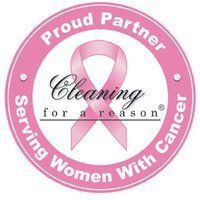Your Guide to a Perfectly Organized Food Pantry
Where you store your food, how you store your food, and what types of food you store all matters when it comes to
Keeping your food pantry organized will simplify your life in the kitchen!
keeping a clean and organized food pantry. You surely can’t cook if you don’t have the right food items and ingredients for the meal, and if you can’t find where those essential ingredients are, then you might as well not even have them. If the kitchen is your personal castle, then your food pantry is your armory, the place that stocks all of your essential supplies for survival and success.
Food pantry stocking and organization sounds easy, but like most things in life, it is harder than it seems. There is common sense involved, but there is also strategy involved in creating and maintaining a well-organized food pantry. Imagine how much more simple and fun cooking would be if you never had to wonder or worry about where all the right ingredients were. No matter the size, shape, or location of your food pantry, it is possible to transform it into the perfect food pantry, at least for you. The following article by Arianne Cohen from Woman’s Day covers some basic, universal guidelines for maintaining an organized and orderly food pantry that’s perfect for your needs.
Think of your pantry the way you think of your refrigerator—as the food command center of your home. “You want to be able to open your cupboards and make dinner,” says Amy Pennington, author of Urban Pantry. “You can’t do that if your pantry only has flour, sugar, nuts and cereal.” And you can’t do that if you don’t know what you have or where it is. What you need is a master plan to get your pantry well-stocked, well-organized and ready for duty.
5 Universal Rules
Whether your pantry is a few shelves in the cupboard, a walk-in closet or three deep drawers, you can make it work. Just stick to these rules:
1. Know what you use.
How to know what to keep a stash of? Ask yourself what you eat most. If you love rice, then a 20-lb bag is great (if you’ve got the space). If you’re crackers about crackers, sure, keep a row of them. Avoid the common mistake of filling your pantry with foods you don’t often use, such as a supersize bag of flour or a row of powdered drinks.
2. Shop small.
I know, this is contrary to the dogma of rolling up to Costco in your minivan, but you don’t need a pantry that can feed your family through autumn, bomb-shelter style. The idea is to keep all items in your pantry constantly in use, filling the space you have with whatever healthy foods you might need. “People tend to go to warehouse clubs and buy giant family packs, then those huge boxes sit half-used for a year,” says Scott Dolich, chef at Park Kitchen restaurant in Portland, Oregon. Buy in bulk only the stuff you use often.
3. Go canned.
“A lot of people think canned goods are not as fresh, but canned vegetables are picked at their peak freshness, so they’re a great way to keep your pantry stocked,” says David Mechlowicz, culinary purchasing manager for Food Network. You can also enhance what you’re serving by adding fresh items to canned products. In other words, when you want to make a stew or soup or spruce up pasta, canned tomatoes are better than no tomatoes. Ditto with artichokes, pineapple, and pretty much every fruit and many nonleafy veggies.
4. Unwrap.
“Most people don’t unwrap excess packaging before putting away foods,” says Lorie Marrero, author of The Clutter Diet. “Take paper towels, for instance. Cut off that overwrap that holds the rolls together, and you can fit individual rolls much easier.” Ditto for soda, snack packs and multipacks.
5. Be cool.
Pretty much all pantry items do well in cool, dark environments. “Store foods away from your stove,” says Dolich. The biggest threat? Nearby appliances giving off heat. Dampen your hand and feel around your pantry to make sure the fridge or dishwasher isn’t heating it.
What Goes Where?
You want to create a pantry filled with easy-to-see foods in active rotation. Professional organizer Chris McKenry, a board member of the Los Angeles–based National Association of Professional Organizers, tells you how to transform your pantry.
Clean it out.
Purge. Which in this case means eat. Go through your pantry and pull out absolutely everything. Split your items into two piles: stuff you use and want to keep, and foods you haven’t touched in at least three months (if you haven’t used it by now, you’re probably not going to use it). For the stuff you generally don’t use, decide whether to toss it, donate it to a food pantry or serve it imminently. If it’s shake powder from that diet you did three years ago, toss it. If it’s cereal you just haven’t gotten around to eating, serve it soon. “Free up space so that you have room for what you really need,” says McKenry. And regift those gift baskets that take up half a shelf.
Consider relocating.
Not you, your stuff. Your pantry probably has more than a few non-food items. Perhaps the DustBuster and mop are in there. Waffle iron? Serving platters? Ask yourself, Is there a better place for these things? Here’s a secret: Doors are the great underutilized spaces in pantries. If your cleaning supplies must stay, at least get them on door hooks. I like the Reisenthel Big Eye Wardrobe Shelf. You’ve probably seen it in someone’s coat room, but its four hooks are perfect for hanging brooms and mops, while the shelf works for paper towels, all-purpose cleaners and the like ($35; Amazon.com). Or try The Grook Holder, a strip of rubber pressure clamps that hold cleaning products, gardening tools and more ($19.99; Casabella.com).
Create zones.
Group your pantry items by type—grains, drinks, pet food, baking items, canned goods, soups, snack foods, etc. And group similar items within each zone (all the canned pineapple in one cluster, canned peaches in another). The items in each zone (rice, couscous and pasta, or canned fruits and vegetables) tend to be interchangeable, so this way you’re working toward your goal: healthy meals. Each zone gets its own dedicated shelf or drawer. If your shelving doesn’t naturally separate the zones from each other, create separations. Shelf dividers, like the ones used for sweaters, work great ($7 for 2; Organize.com). Large items or jugs that you rarely use go in bottom corners.
Label.
If it makes sense for you, label the edges of your shelves with what goes there. You and the potentially confused people you live with are pretty likely to put cereal on the shelf labeled cereal.
Make it visible.
You want to be able to see everything and grab it with one hand. “Builders often design pantries with fixed shelves that are 1 to 2 feet apart,” says Barry Izsak, of the home organizing company Arranging It All in Austin, Texas. “If you use those shelves for cans or boxes of rice and soup mixes and so forth, there’s tons of wasted space, and tons that you can’t see.” For items that are hard to see or blocked by other items, consider these organizing helpers:
- Bleachers: These cheap, functional little bleachers turn one shelf into three or four. Ideal for fixed shelves that are far apart. (Stainless Steel 3-Tier Expanding Shelf expands from 14" to 27 ¼" wide; $22 at The Container Store.)
- Turntable: Nothing gets lost in the back if you can spin to find it. The OXO Softworks 11" and 16" turntables can hold a couple dozen cans each, and are also great for corraling bottles and jars ($11.99 and $16.99; OXO.com).
- ShelfGenie: Want a truly customized kitchen? Consider ShelfGenie, the company that personal organizers have a crush on. A representative will come to your home, measure and install slide-out drawers and shelves throughout your cabinets and pantry, transforming deep cabinets into shallow, easy-to-access hubs ($500 and up; ShelfGenie.com).
- Bins: Place them on deep shelves and pull them out drawer-style. Ideal for snack packs. The basic cloth bins from Target are great because they come in three different sizes ($39.99 for set of 3; Target.com).
Pantry or Not?
- Bread: You may think it will last much longer in the refrigerator, but that will actually make it go stale faster, according to the Wheat Foods Council. The best way to store bread is to wrap it tightly in plastic wrap and keep it at room temperature.
- Peanut butter: Some people like to leave peanut butter on the counter, a remnant of the fact that pantries a half-century ago were chilled. Yours should go in the fridge, along with all opened condiments (except oils).
- Garlic, onions, potatoes: These should be kept in a basket or baskets—one for each kind of item—in the pantry, where it’s relatively cool and shielded from heat and light. Stored properly, they can last for up to 4 weeks.
Your time in the kitchen will be made much simpler by following these guidelines to keeping your food pantry organized. Finding the right tools – spice racks, stacking baskets, slide-out shelves, etc. – to help you organize your food pantry is a big help. Also, remember to clean your food pantry before you try to organize the food items within, and organize your pantry for you. Do what makes most sense for your food pantry: consider the type of food pantry you have; your food pantry’s size, shape and location; and what kinds of food and ingredients you use the most that will be stocked in your food pantry. Nothing in life is perfect, your food pantry included, but you can make your food pantry “perfect-ish,” at least for you. If your food is easily found, accessible, and organized in such a way that is perfect for you, you will appreciate and enjoy your food pantry so much more.
Where in Rhode Island are You Looking for Cleaning Service?
The Maids of Rhode Island
2435 Nooseneck Hill Road Building C Unit 4, Coventry, RI 02816
(401) 392-0767



